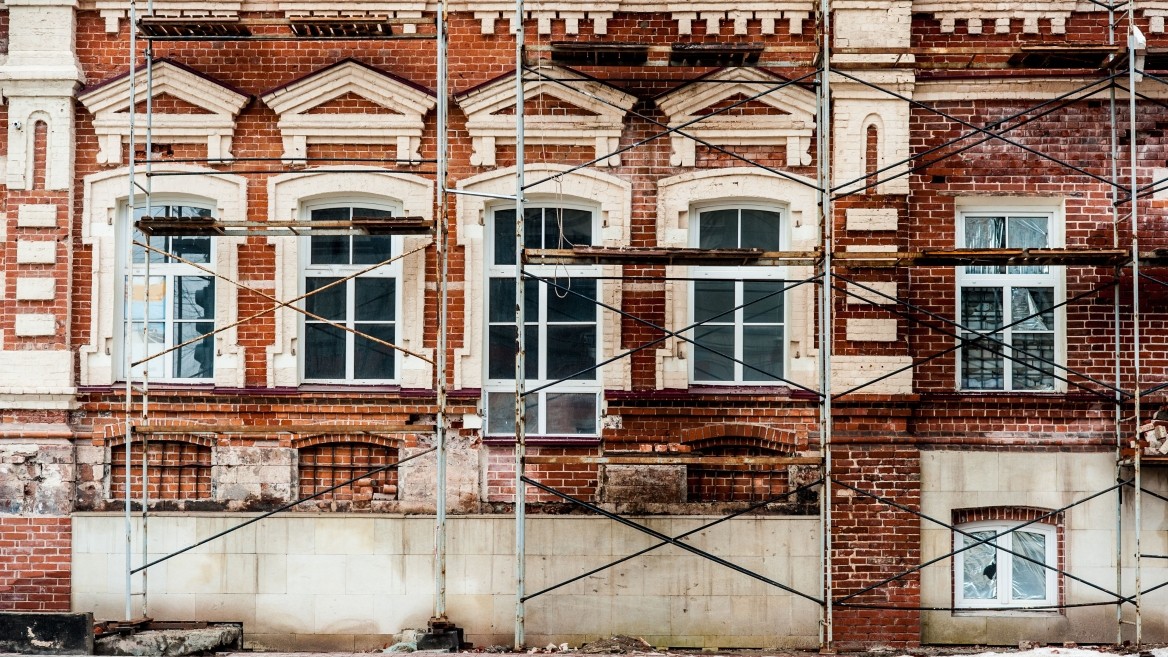Repairing Historic Structures and Updating to Modern Codes: Embracing Sustainability and Resilience
In the face of climate change, the importance of sustainable practices cannot be overstated. Adapting, renovating, and reusing existing buildings not only helps combat climate change but also preserves our architectural heritage. At Silman, A TYLin Company, and the TYLin Group, we recognize the significance of this approach and are committed to promoting the repair and adaptive reuse of historic structures while ensuring compliance with modern building codes. Let’s explore the various aspects of this process, from understanding embodied carbon to overcoming construction challenges.
Embodied Carbon: A Case for Building Reuse
New buildings contribute significantly to global CO2 emissions, with building operations accounting for 28% and embodied carbon from construction materials contributing an additional 12% annually. Unlike operational carbon emissions that can be reduced over time, embodied carbon emissions are locked in as soon as a building is constructed. Embracing a renovation pathway can save up to 50-75% of embodied carbon emissions associated with new construction by reusing the existing substructure and superstructure. By understanding the embodied carbon breakdown of a typical new building, we can realize the upfront savings potential of building reuse.
Archaic Structural Systems: A Dive into History
Historic structures often feature unique and archaic structural systems that require special considerations during adaptive reuse projects. It is crucial to identify and understand the characteristics of these systems to ensure their preservation and safe transformation. Some notable examples include:
Heavy Timber and Cast-Iron Construction: This system relies on exterior masonry walls to brace the interior wooden elements. Modifications to this system should consider fire resistance and the minimal connectivity between elements.
Terracotta Flat Arch and Terracotta Arch Systems: These systems rely on arching action and were commonly used for fireproof floor construction. Making large openings or modifications in these systems can destabilize the arching action, requiring careful planning and additional structural support.
Brick Arch and Guastavino Arch or Vault: These systems also rely on arching action and are prone to localized destabilization from large point loads. Strategies such as spreading MEP loading, suspending ceilings, and lighting from steel beams, or adding supplemental steel angles may be necessary for successful modification.
Metal Pan Joist System: This system, an early precursor to concrete joists, often features structural exterior and interior brick bearing walls. New openings should consider the load-bearing capacity of these walls.
It’s important to note that the evaluation and understanding of these systems is as much art as it is science and our unique knowledge regarding these systems differentiates us from much of the rest of the buildings market. How these systems truly work, how to justify them structurally, how to renovation and reuse them with confidence, comes from strong relationships, deep research, and expertise that rarely shows up in codes or modern textbooks.
Design Strategies for Structural Reuse and Modern Code Compliance
When reimagining historic structures, it is vital to incorporate design strategies that prioritize structural reuse and align with modern building codes. The International Existing Building Code (IEBC) provides guidelines for repair, alterations, and additions to existing buildings. Understanding the triggers for code upgrades is essential, whether it's repair, alteration, change in occupancy, addition, or relocation. By complying with the appropriate codes, we can ensure the safety, functionality, and longevity of the renovated structures.
The Design Process: Unveiling the Secrets
To embark on an adaptive reuse project, site observation and probing/testing campaigns become essential tools for uncovering hidden information about the existing structure. Site visits allow engineers to gather valuable insights by examining architectural finishes, identifying potential issues, and gaining a deeper understanding of the building's history and performance. Non-destructive testing methods, such as ground-penetrating radar, thermographic imagery, and surveys, are paired with confirmational destructive probes like core sampling and geotechnical investigations to assess the condition of the building's structural elements and materials. Material testing provides crucial data on concrete composition, rebar strength, and the capacity of bearing walls, ensuring informed decision-making during the design phase.
Navigating Construction Challenges for Adaptive Reuse
During the construction phase, challenges are inevitable, but careful planning and anticipation can minimize their impact. Strategies to overcome potential issues include targeted probing and testing in critical areas, conducting thorough condition assessments of structural and facade elements, and implementing soft demolition when feasible. Collaboration with construction management professionals can optimize logistics and access while considering shoring, bracing, and sequencing structural modifications. Adequate allowances and contingencies must be budgeted to accommodate unknowns and repairs due to deferred maintenance or hidden damages.
A Pathway to Sustainable and Resilient Preservation
By embracing the repair and adaptive reuse of historic structures, we can achieve significant environmental benefits while preserving our architectural heritage. We believe in the power of sustainable engineering practices and the value of incorporating modern codes into the revitalization of existing buildings. Our toolbox of knowledge and expertise equips us to navigate the complexities of structural reuse, ensuring safe, functional, and resilient transformations. Let us work together to create a sustainable future by preserving the past.

After several years of prior experience in the industry, Victoria Ponce de Leon joined Silman in 2011 and was promoted to Principal in 2017. She has led the design and project management of renovation, adaptive reuse, and new construction projects for clients in K-12, higher education, private residential, hospitality and museum sectors.
A few of her notable completed projects include the renovation of the Kline Chemistry Labs at Yale University; the new Whitney Museum of American Art in New York, NY; the conversion of the former MTA headquarters at 370 Jay Street to NYU facilities in Brooklyn, NY; the Warehouse at 520 West 20th Street in New York, NY; and the Milstein Center at Barnard College in New York, NY. Victoria is currently the design Principal in Charge of the renovation of the landmarked Waldorf Astoria .
Since 2015, Victoria has been a Lecturer for the Graduate Program of the Yale University School of Architecture course, “Systems Integration and Development in Design.” Victoria is a member of the Structural Engineers Association of New York (SEAoNY), having served as the University Outreach Committee Chair from 2009-2013 and participating as an ACE Mentor from 2013-2014.
When not working on complex engineering solutions, Victoria enjoys concocting new recipes, nurturing the family vegetable garden, and building magnetic tile structures with her two young sons.
